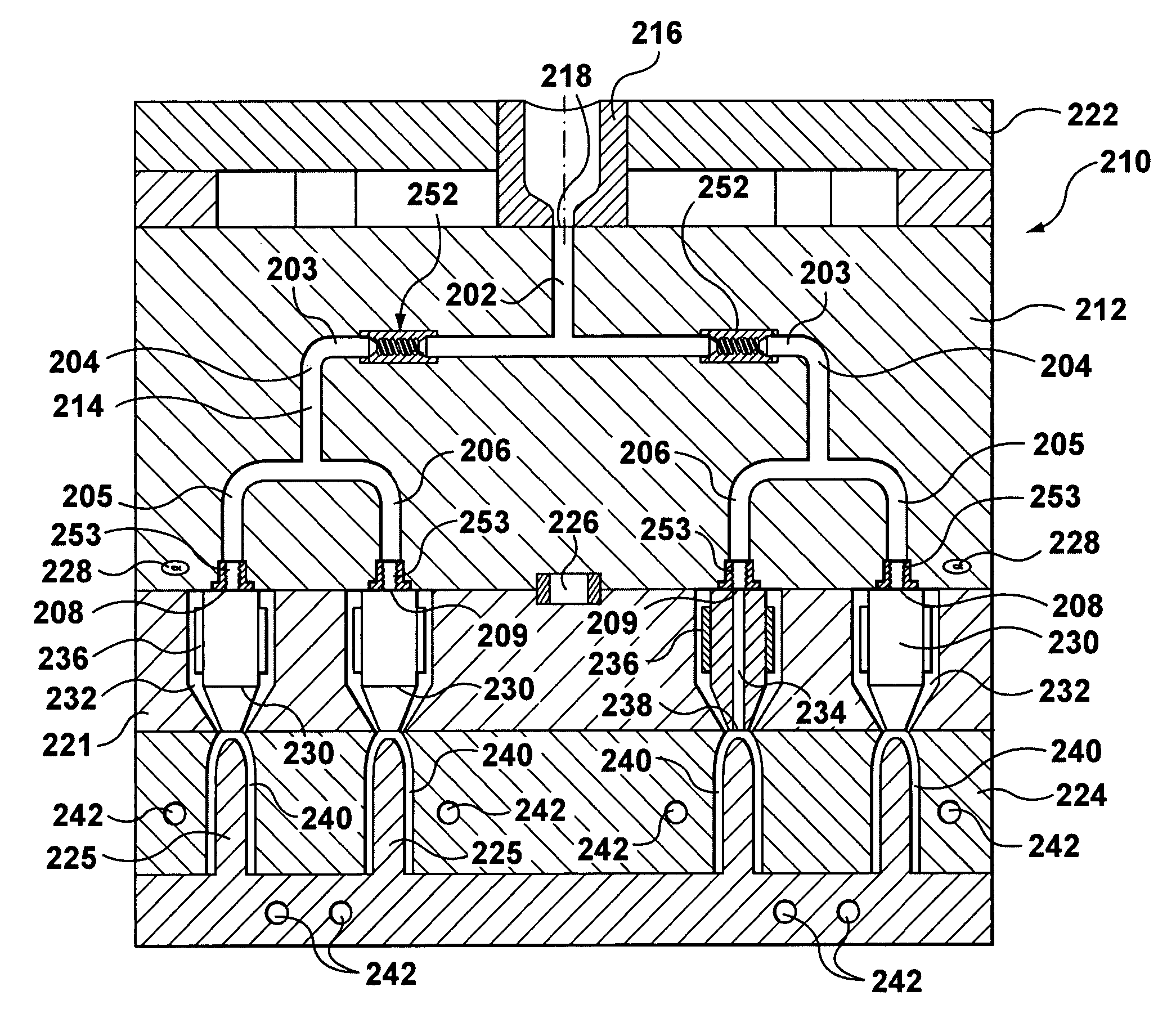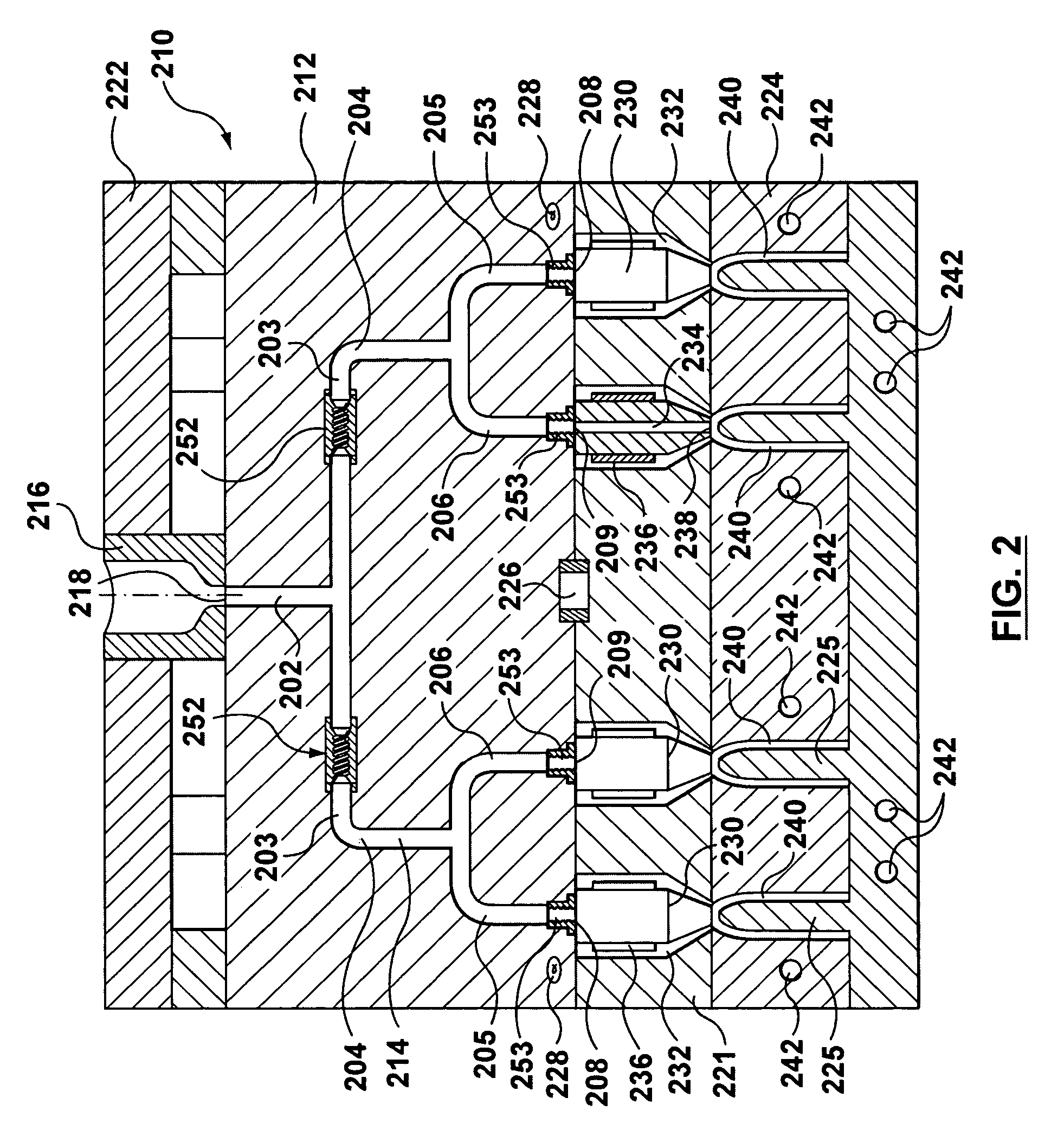Melt redistribution element for an injection molding apparatus
a technology of redistribution element and injection molding apparatus, which is applied in the field of redistribution element, can solve the problems of unavoidable flow imbalance, temperature imbalance between material along the side of the channel, adjustment or local correction, etc., and achieves the effect of reducing the diameter of the manifold, improving homogenization, and not invasiv
- Summary
- Abstract
- Description
- Claims
- Application Information
AI Technical Summary
Benefits of technology
Problems solved by technology
Method used
Image
Examples
Embodiment Construction
[0032] Referring now to FIG. 2, an injection molding apparatus according to an embodiment of the invention is generally shown at 210. Injection molding apparatus 210 includes a two level manifold 212 having manifold channels 214. As shown, manifold channels 214 are in communication with an inlet melt channel 202 that splits into at least two melt branches 203 downstream of a manifold inlet 218. Melt from channel 202 enters a melt redistribution element 252 within each branch 203. Melt redistribution element 252 will be discussed in further detail below, with respect to melt redistribution element 352 of FIG. 3. Each branch 203 turns a corner 204 and splits again into branches 205 and 206. Manifold 212 is spaced between a mold block back plate 222 and a cavity mold plate 224. Manifold 212 is located relative to the cavity mold plate 224 by a locating ring 226. A sprue bushing 216 is coupled to the manifold inlet 218. The sprue bushing 216 receives melt from a machine nozzle (not show...
PUM
| Property | Measurement | Unit |
|---|---|---|
| pressure | aaaaa | aaaaa |
| diameter | aaaaa | aaaaa |
| temperature | aaaaa | aaaaa |
Abstract
Description
Claims
Application Information
 Login to View More
Login to View More - R&D
- Intellectual Property
- Life Sciences
- Materials
- Tech Scout
- Unparalleled Data Quality
- Higher Quality Content
- 60% Fewer Hallucinations
Browse by: Latest US Patents, China's latest patents, Technical Efficacy Thesaurus, Application Domain, Technology Topic, Popular Technical Reports.
© 2025 PatSnap. All rights reserved.Legal|Privacy policy|Modern Slavery Act Transparency Statement|Sitemap|About US| Contact US: help@patsnap.com



